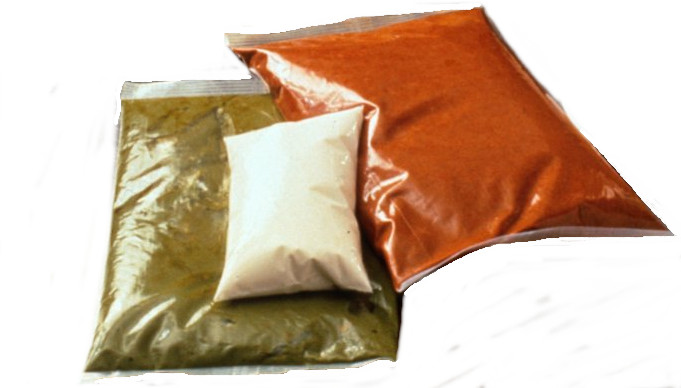All too often, kitchen employees are sidelined by cuts, burns, slips and falls. In fact, the foodservice industry reported 208,400 nonfatal occupational injury and illness cases in 2012, one of eight industries with 100,000 or more cases, according to the Bureau of Labor Statistics of the U.S. Department of Labor.
Kitchen injuries exact a toll both in human suffering and negative business consequences, such as hikes in workers’ compensation insurance premiums tied to higher injury rates. Add to that the costs of lost productivity when experienced employees are injured plus the considerable expense of recruiting, hiring and training qualified fill-in workers in a challenging labor market.
As a result, providing a safe workplace for employees is a sensible business move as well as a moral obligation for operators.
Furthermore, keeping employees safe, efficient and productive on the job is arguably more important than ever at a time when a $15 minimum wage is being debated and additional employee health insurance costs are looming.
“Operators can ill afford to have an environment that doesn’t feature kitchen safety for the worker and food safety for the customer at the top of the list,” says Lucian Gray, director, North America Foodservice Business Development, for Sealed Air Corp.’s Food Care Division, of which Cryovac® brand food packaging is a part. “One of the best defenses against injuries is to look at how packaging can radically change the safety of the kitchen.”
Indeed, with proper risk prevention practices, including the use of food packaging that makes kitchen tasks safer to perform, restaurant operators can minimize such injuries and keep workers on the job.
Improved safety is one of the beneficial results when operators switch from No. 10 cans, pails and buckets to flexible pouches for soups, sauces and condiments. For example, take Cryovac® Flavour Mark shelf-stable aseptic and retort pouch packaging. As anyone who has slashed a finger on the sharp rim of a can or found a metal shard from the can opener in a plate of food knows, there is a compelling safety rationale for using flexible pouches rather than cans. In addition, food may be heated in the pouch without opening it and transferring it to another vessel, eliminating the risk of cross contamination. Those safety benefits are in addition to the advantages that pouches have over cans in sustainability, storage efficiency and food consistency and quality.
“The fact that flexible pouches are safer than No. 10 cans is undeniable,” says Gray. “And it is easy for an operator to switch to flexible pouches without an interruption in business or a change in recipes.”
 Cuts also often result when employees use a knife or scissors to open a food package. In fact, cutting injuries are so prevalent that some restaurant chains have banned sharp tools in the kitchen entirely, Gray says. The better alternative is an easy-open package like the Cryovac® QuickRip bag. It opens just by pulling a tab, making opening boneless beef and pork packages quick, easy and safe. It also saves expensive meats from accidental scarring with knife cuts and helps eliminate cross-contamination spread by knife contact.
Cuts also often result when employees use a knife or scissors to open a food package. In fact, cutting injuries are so prevalent that some restaurant chains have banned sharp tools in the kitchen entirely, Gray says. The better alternative is an easy-open package like the Cryovac® QuickRip bag. It opens just by pulling a tab, making opening boneless beef and pork packages quick, easy and safe. It also saves expensive meats from accidental scarring with knife cuts and helps eliminate cross-contamination spread by knife contact.
Two other prevalent types of kitchen injuries, burns and slips and falls, can be minimized by preventing hot grease and cooking juices from splattering from a roasting pan, scalding exposed skin and making floors slippery. There are packaging solutions to mitigate those hazards, too.
One example is the Cryovac® Oven Ease® ovenable bag, which holds a protein such as a rib roast, whole turkey or ham that has been pre-seasoned or pre-marinated by the manufacturer and shipped to the operator for cooking in the bag. In terms of risk prevention, the Oven Ease® bag safely holds cooking fats and juices so they don’t spill out and create a hazard, unlike an open roasting pan.
“Nobody is burned or splashed with hot juices, and the floors don’t get slippery, so again you are providing a safe workplace while cooking the roast with high quality and consistency,” Gray says.
The fact that the protein is cooked in the same Oven Ease® bag in which it was processed and shipped confers yet another safety benefit. Employees never touch the raw protein, thus significantly decreasing the risk of cross-contamination with other items in the kitchen. This system also reduces prep and clean-up time and in some cases cuts cooking time as well.
Protecting kitchen employees from cuts, burns, slips and falls is an imperative for restaurant operators. The use of food packaging solutions that make routine kitchen tasks less hazardous can play an important role in a safety program that prevents risks and keeps workers on the job. In a fiercely competitive industry in which any advantage is welcome, these versatile packaging solutions hold the promise of greater efficiency, productivity and quality as well.

